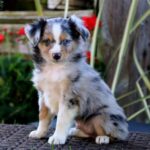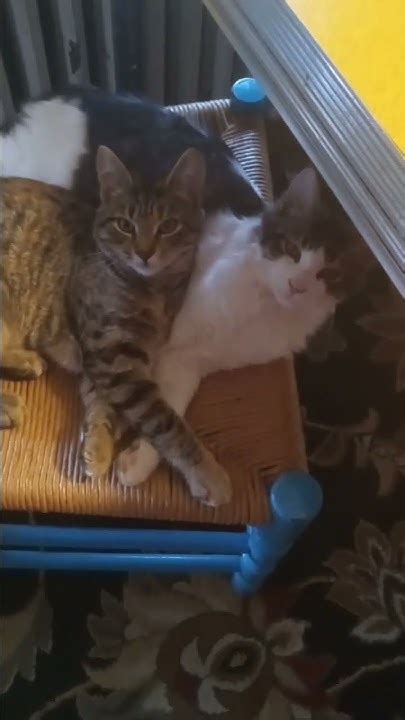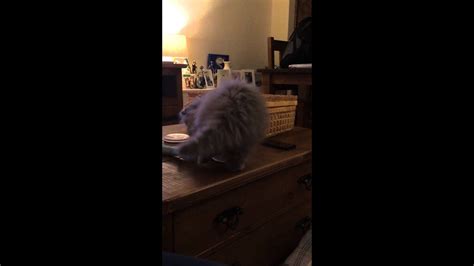
A Maine Coon kitten with a striking facial marking resembling a “perfect flame” is captivating hearts online, becoming an internet sensation due to its unique and rare appearance.
A fluffy Maine Coon kitten named Flame is setting the internet ablaze with its extraordinary facial markings. The kitten’s face features a distinct, symmetrical pattern that strongly resembles a flame, a rare genetic anomaly that has garnered widespread attention and admiration. The kitten, residing in Russia, belongs to a cattery specializing in Maine Coons, and its unique appearance has quickly made it a standout among its peers.
“Maine Coons are known for their striking looks, but Flame’s face takes it to another level,” said Irina, Flame’s breeder. “It’s incredibly rare to see such a perfectly defined pattern.”
The kitten’s photos and videos have been shared extensively on social media platforms, attracting thousands of comments and shares from users worldwide. Many express awe at Flame’s unique appearance, describing it as “beautiful,” “stunning,” and “absolutely perfect.” Some have even compared the kitten to mythical creatures and characters, adding to its mystique and charm.
Maine Coons are one of the largest domesticated cat breeds, known for their gentle and friendly nature, making them popular pets. Originating from Maine, USA, they are characterized by their robust build, thick fur, and bushy tails. Flame’s unusual markings, however, differentiate it from typical Maine Coons, highlighting the genetic diversity within the breed.
Experts suggest that Flame’s unique pattern is likely the result of a rare genetic mutation during embryonic development. These mutations can lead to variations in pigmentation, resulting in unique markings and patterns on an animal’s fur. While the exact genetic mechanisms are not fully understood, the occurrence of such patterns is generally considered random and uncommon.
Flame’s rise to internet fame underscores the growing fascination with unique animal appearances and the power of social media to amplify such stories. In recent years, numerous animals with unusual markings, coloring, or physical traits have gained widespread attention, often becoming viral sensations. These stories highlight the diversity of the animal kingdom and the unique qualities that make each creature special.
The kitten’s breeder plans to continue documenting Flame’s life and development on social media, providing followers with updates on its growth and activities. With its captivating appearance and charming personality, Flame is poised to remain a beloved figure in the online community.
Detailed Background on Maine Coons
Maine Coons, often referred to as “gentle giants,” are one of the oldest natural breeds in North America. Their exact origins are shrouded in mystery, with several folk tales surrounding their development. One popular legend suggests that they are the result of crosses between semi-wild domestic cats and raccoons, which is genetically impossible but contributes to their distinctive appearance, particularly their bushy tails. A more plausible theory suggests that they descended from long-haired cats brought to America by European sailors, possibly interbreeding with local short-haired cats.
Recognized for their intelligence and playful personalities, Maine Coons are known to be excellent family pets. They are typically good with children and other animals, often displaying a tolerant and friendly demeanor. Their adaptability and resilience have made them popular in various climates, from cold, snowy regions to warmer environments.
Maine Coons possess several physical characteristics that distinguish them from other cat breeds. Their large size is one of the most notable features, with males often weighing between 15 and 25 pounds and females between 10 and 15 pounds. They have a muscular build, broad chest, and substantial bone structure, contributing to their overall imposing appearance.
Their coat is another defining characteristic, consisting of long, shaggy fur that is water-resistant and provides insulation against harsh weather conditions. The fur is typically longer on the ruff, stomach, and tail, giving them a distinctive mane-like appearance. Maine Coons come in a wide variety of colors and patterns, including tabby, solid, bi-color, and tortoiseshell.
In addition to their physical traits, Maine Coons are known for their vocalizations. They often communicate through a variety of meows, chirps, and trills, using these sounds to express their needs and interact with their owners. They are also known for their love of water, often playing with or even swimming in water sources, a trait that is relatively uncommon among domestic cats.
Maine Coons are generally healthy cats, but they are prone to certain genetic health conditions. Hip dysplasia, a condition affecting the hip joint, is relatively common in the breed, and responsible breeders often screen their cats for this condition. Hypertrophic cardiomyopathy (HCM), a form of heart disease, is another potential concern, and genetic testing is available to identify cats at risk. Spinal muscular atrophy (SMA), a genetic disorder affecting the spinal cord, is also seen in Maine Coons, and breeders can test for this condition as well.
The Genetics Behind Unusual Animal Markings
The unique markings observed in animals like Flame are often the result of complex genetic interactions and mutations that occur during embryonic development. These processes determine the distribution of pigment-producing cells, known as melanocytes, which are responsible for creating the diverse range of colors and patterns seen in the animal kingdom.
Melanocytes originate in the neural crest, a transient embryonic structure that gives rise to various cell types, including pigment cells. These cells migrate throughout the developing embryo, populating the skin and hair follicles, where they produce melanin, the pigment responsible for skin and hair color.
The distribution and activity of melanocytes are controlled by a complex network of genes and signaling pathways. Mutations in these genes can disrupt the normal migration, proliferation, or differentiation of melanocytes, leading to variations in pigmentation.
One example of a gene that plays a crucial role in pigmentation is the melanocortin 1 receptor (MC1R) gene. This gene encodes a receptor protein that binds to melanocortin hormones, which regulate the production of different types of melanin. Mutations in the MC1R gene can affect the balance between eumelanin (responsible for black and brown pigments) and pheomelanin (responsible for red and yellow pigments), resulting in variations in coat color.
Another important gene is the agouti signaling protein (ASIP) gene, which encodes a protein that inhibits the activity of the MC1R receptor. Variations in the ASIP gene can lead to changes in the distribution of pigmentation, resulting in banded or agouti patterns, such as those seen in tabby cats.
In some cases, unusual markings may be the result of somatic mutations, which occur after fertilization and affect only a subset of cells in the developing embryo. These mutations can lead to mosaic patterns, where different regions of the body have different pigmentation.
The precise genetic mechanisms underlying Flame’s unique facial marking are not fully understood, but it is likely the result of a rare combination of genetic factors that influence the distribution and activity of melanocytes during embryonic development. The symmetry of the pattern suggests that it may be influenced by developmental signaling pathways that control the formation of facial structures.
The Appeal of Unique Animal Appearances
The widespread fascination with animals like Flame, who possess unusual markings or physical traits, reflects a deep-seated human appreciation for beauty, novelty, and diversity. These animals capture our attention and evoke a sense of wonder, reminding us of the incredible variety and complexity of the natural world.
Social media has played a significant role in amplifying the appeal of these animals, providing a platform for sharing their images and stories with a global audience. The internet allows us to connect with animals that we might never encounter in our daily lives, fostering a sense of connection and appreciation for the diversity of the animal kingdom.
There are several factors that contribute to the appeal of unique animal appearances. One is the element of surprise and novelty. We are naturally drawn to things that are different or unexpected, and animals with unusual markings or traits stand out from the crowd, capturing our attention and sparking our curiosity.
Another factor is the association with cuteness and vulnerability. Animals with unusual appearances are often perceived as being particularly adorable or endearing, perhaps because they evoke a sense of protectiveness and compassion. Their unique features may also make them seem more vulnerable or in need of care, further enhancing their appeal.
In some cases, unique animal appearances may also have symbolic or cultural significance. For example, animals with unusual markings may be seen as being lucky or possessing special powers, reflecting ancient beliefs and traditions.
The popularity of animals like Flame also highlights the growing trend of pet humanization, where animals are increasingly viewed as members of the family and treated with the same level of care and affection as humans. This trend has led to a greater emphasis on the individual characteristics and personalities of pets, further enhancing the appeal of animals with unique traits.
Ethical Considerations in Breeding for Unique Traits
While the fascination with unique animal appearances is understandable, it is important to consider the ethical implications of breeding animals specifically for these traits. Selective breeding can sometimes prioritize aesthetic considerations over the health and well-being of the animals, leading to the perpetuation of genetic disorders and other health problems.
In the case of Maine Coons, breeders should be particularly mindful of the genetic health conditions that are known to affect the breed, such as hip dysplasia, HCM, and SMA. Responsible breeders screen their cats for these conditions and avoid breeding animals that are at risk of passing them on to their offspring.
It is also important to avoid breeding animals with extreme physical traits that could compromise their health or welfare. For example, breeding cats with excessively short legs or flattened faces can lead to breathing difficulties, spinal problems, and other health issues.
The focus should always be on breeding healthy, well-adjusted animals that are capable of living long and fulfilling lives. While unique markings and appearances may be appealing, they should not be the primary consideration in breeding decisions. Ethical breeders prioritize the health and welfare of their animals above all else.
The Future of Flame
Flame’s story is a testament to the power of social media to connect people with animals and to celebrate the diversity of the natural world. As Flame continues to grow and develop, its online following is likely to expand, and its story will continue to inspire and delight people around the world.
The kitten’s breeder has expressed a commitment to providing Flame with the best possible care and to sharing its life with its online followers. This dedication to the well-being of the animal is crucial in ensuring that Flame’s story remains a positive and uplifting one.
Flame’s unique appearance has also raised awareness about the Maine Coon breed and the importance of responsible breeding practices. By highlighting the genetic diversity within the breed, Flame’s story can encourage breeders to prioritize the health and welfare of their animals and to avoid breeding for extreme traits that could compromise their well-being.
In the years to come, Flame may become an ambassador for the Maine Coon breed, inspiring people to learn more about these gentle giants and to appreciate their unique qualities. Its story may also encourage others to adopt or rescue animals with special needs or unusual appearances, promoting compassion and acceptance in the animal community.
Ultimately, Flame’s legacy will be one of beauty, inspiration, and advocacy for the well-being of animals. Its story will continue to resonate with people around the world, reminding us of the power of connection and the importance of celebrating the diversity of life on Earth.
Frequently Asked Questions (FAQ)
-
What makes Flame the Maine Coon kitten so special?
Flame is special because of the distinct and rare “perfect flame” marking on its face. This unique pattern, likely a result of a genetic anomaly, has captured the attention of people worldwide, making it an internet sensation due to its striking appearance.
-
Where does Flame live, and who is its breeder?
Flame resides in Russia and belongs to a cattery specializing in Maine Coons. Irina is Flame’s breeder, who has shared photos and videos of the kitten on social media, attracting a large following.
-
What are some typical characteristics of Maine Coon cats?
Maine Coons are one of the largest domesticated cat breeds, known for their gentle and friendly nature. They are characterized by their robust build, thick fur, bushy tails, intelligence, playful personalities, and vocal communications, such as meows, chirps, and trills.
-
Are there any specific health concerns associated with Maine Coon cats?
Yes, Maine Coons are prone to certain genetic health conditions, including hip dysplasia, hypertrophic cardiomyopathy (HCM), and spinal muscular atrophy (SMA). Responsible breeders screen their cats for these conditions to minimize the risk of passing them on to their offspring.
-
What is the genetic explanation for Flame’s unique facial marking?
The exact genetic mechanisms underlying Flame’s unique facial marking are not fully understood, but it is likely the result of a rare combination of genetic factors that influence the distribution and activity of melanocytes during embryonic development. The symmetry of the pattern suggests it may be influenced by developmental signaling pathways controlling facial structure formation.
-
How do melanocytes affect animal markings? Melanocytes are pigment-producing cells responsible for creating the diverse colors and patterns seen in animals. They originate in the neural crest during embryonic development and migrate throughout the developing embryo, populating the skin and hair follicles. Mutations in genes controlling their distribution and activity can lead to variations in pigmentation.
-
What role does the MC1R gene play in animal coloration? The melanocortin 1 receptor (MC1R) gene encodes a receptor protein that binds to melanocortin hormones, regulating the production of different types of melanin. Mutations in this gene can affect the balance between eumelanin (responsible for black and brown pigments) and pheomelanin (responsible for red and yellow pigments), resulting in variations in coat color.
-
What is the significance of the ASIP gene in determining animal patterns? The agouti signaling protein (ASIP) gene encodes a protein that inhibits the activity of the MC1R receptor. Variations in the ASIP gene can lead to changes in the distribution of pigmentation, resulting in banded or agouti patterns, such as those seen in tabby cats.
-
What are somatic mutations and how can they affect animal markings? Somatic mutations occur after fertilization and affect only a subset of cells in the developing embryo. These mutations can lead to mosaic patterns, where different regions of the body have different pigmentation. They contribute to unique and localized color variations in animals.
-
Why are people so fascinated by animals with unusual markings? People are fascinated by animals with unusual markings due to their beauty, novelty, and diversity. These animals evoke a sense of wonder and remind us of the incredible variety in the natural world. Social media amplifies this appeal by allowing global sharing of their images and stories.
-
How does social media contribute to the popularity of unique animal appearances? Social media provides a platform for sharing images and stories of animals with unique appearances to a global audience. This allows people to connect with animals they might never encounter otherwise, fostering appreciation and interest in animal diversity and specific traits.
-
What is “pet humanization” and how does it relate to the fascination with unique animal appearances? “Pet humanization” is the trend of viewing animals as members of the family and treating them with the same care and affection as humans. This trend increases emphasis on individual characteristics and personalities of pets, enhancing the appeal of animals with unique traits.
-
What are the ethical considerations when breeding for unique animal traits? Ethical considerations include prioritizing the health and well-being of the animals over aesthetic considerations. Selective breeding should avoid perpetuating genetic disorders and extreme physical traits that could compromise their health or welfare.
-
What genetic conditions should be considered when breeding Maine Coon cats? Breeders should consider hip dysplasia, hypertrophic cardiomyopathy (HCM), and spinal muscular atrophy (SMA). Responsible breeders screen their cats for these conditions and avoid breeding animals at risk of passing them on.
-
What steps should ethical breeders take to ensure the health and welfare of their animals? Ethical breeders should prioritize the health and welfare of their animals above all else. They should screen for genetic health conditions, avoid breeding for extreme traits, and focus on producing healthy, well-adjusted animals capable of living long and fulfilling lives.
-
How does Flame’s story promote responsible breeding practices? Flame’s story raises awareness about the Maine Coon breed and the importance of responsible breeding practices. By highlighting the genetic diversity within the breed, it encourages breeders to prioritize health and welfare and to avoid breeding for extreme traits that could compromise well-being.
-
What might be Flame’s future role within the Maine Coon breed community? Flame may become an ambassador for the Maine Coon breed, inspiring people to learn more about these gentle giants and appreciate their unique qualities. Its story can also encourage others to adopt or rescue animals with special needs or unusual appearances.
-
How does Flame’s legacy promote compassion and acceptance in the animal community? Flame’s legacy promotes compassion and acceptance by reminding us of the power of connection and the importance of celebrating the diversity of life on Earth. Its story can inspire greater understanding and empathy towards animals with unique traits or special needs.
-
Beyond aesthetic appeal, what other qualities make Maine Coons desirable as pets? Maine Coons are known for their intelligence, playful personalities, and gentle nature. They are adaptable, resilient, and good with children and other animals, making them excellent family pets. Their vocalizations and love of water also add to their unique charm.
-
What are the potential drawbacks of focusing solely on breeding for aesthetic traits in animals? Focusing solely on breeding for aesthetic traits can lead to the perpetuation of genetic disorders, health problems, and extreme physical traits that compromise the animal’s health and welfare. It can also overshadow the importance of temperament, behavior, and overall well-being.
-
Can Flame’s unique markings be artificially replicated through selective breeding? Why or why not? While breeders can attempt to select for specific traits, the exact combination of genetic factors that resulted in Flame’s markings are likely rare and difficult to replicate consistently. Somatic mutations, which are random, also play a role, making artificial replication challenging and potentially unethical if it compromises the health of the animals.
-
How do animal shelters and rescue organizations play a role in promoting acceptance of animals with unique appearances? Animal shelters and rescue organizations often showcase animals with unique appearances to promote their adoption, highlighting their individual personalities and qualities rather than focusing solely on their looks. This helps challenge conventional beauty standards and encourages compassion towards all animals, regardless of their appearance.
-
What types of scientific studies could help better understand the genetic basis for unique animal markings? Studies such as genome-wide association studies (GWAS), whole-genome sequencing, and gene expression analysis can help identify the specific genes and regulatory elements involved in determining animal markings. These studies can also investigate the role of somatic mutations and developmental signaling pathways.
-
How might understanding the genetic mechanisms behind unusual animal markings benefit animal conservation efforts? Understanding the genetic basis for unique animal markings can aid in conservation efforts by helping to identify genetically distinct populations, track genetic diversity, and prevent inbreeding. This knowledge can also inform breeding programs aimed at preserving rare or endangered breeds.
-
What can individuals do to support responsible breeding practices and promote the welfare of animals with unique appearances? Individuals can support responsible breeding by purchasing animals from ethical breeders who prioritize health and welfare, adopting from shelters and rescues, educating themselves about breed-specific health concerns, and advocating for animal welfare policies. Supporting organizations that promote responsible breeding and animal welfare can also make a significant difference.









